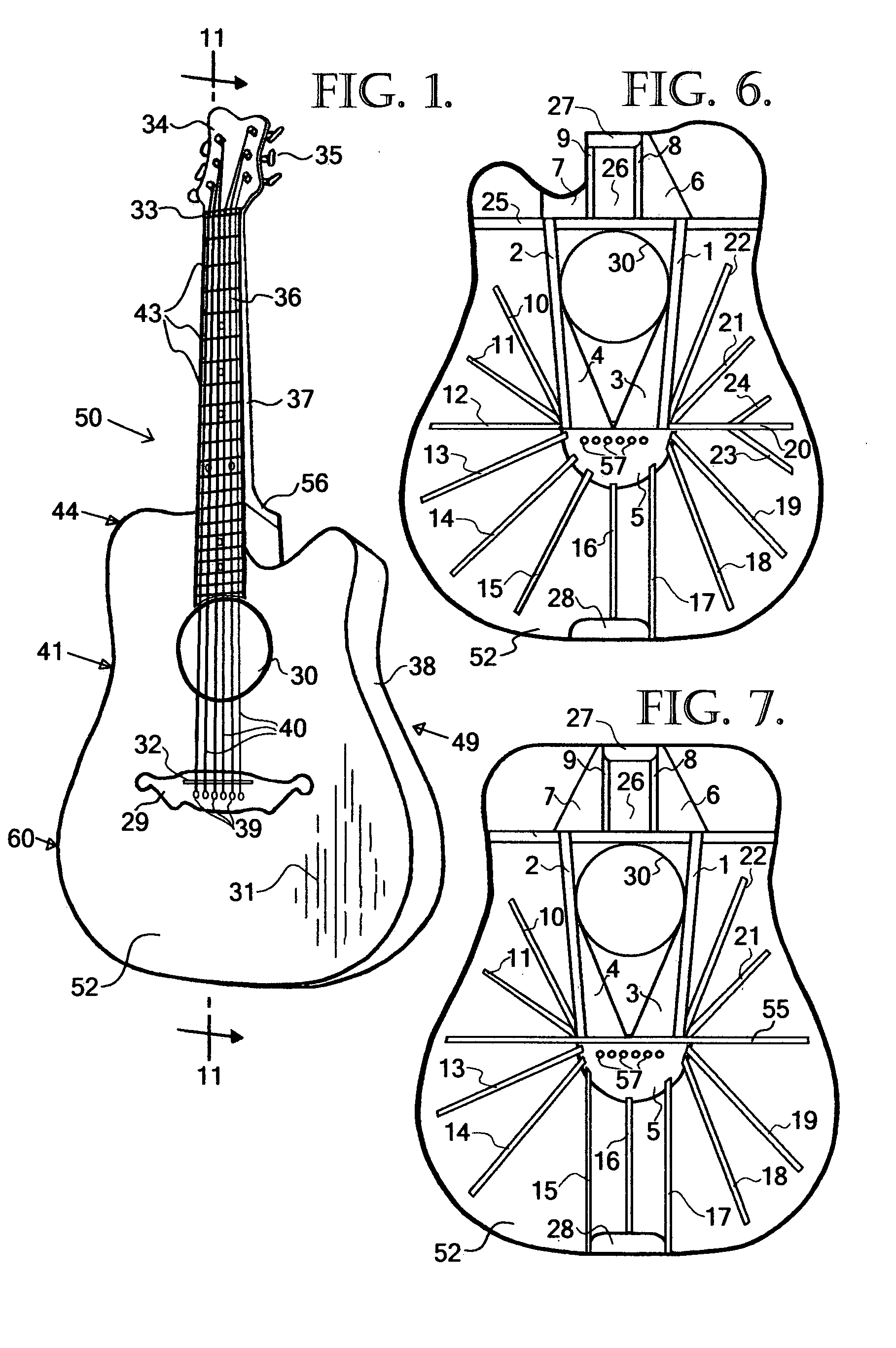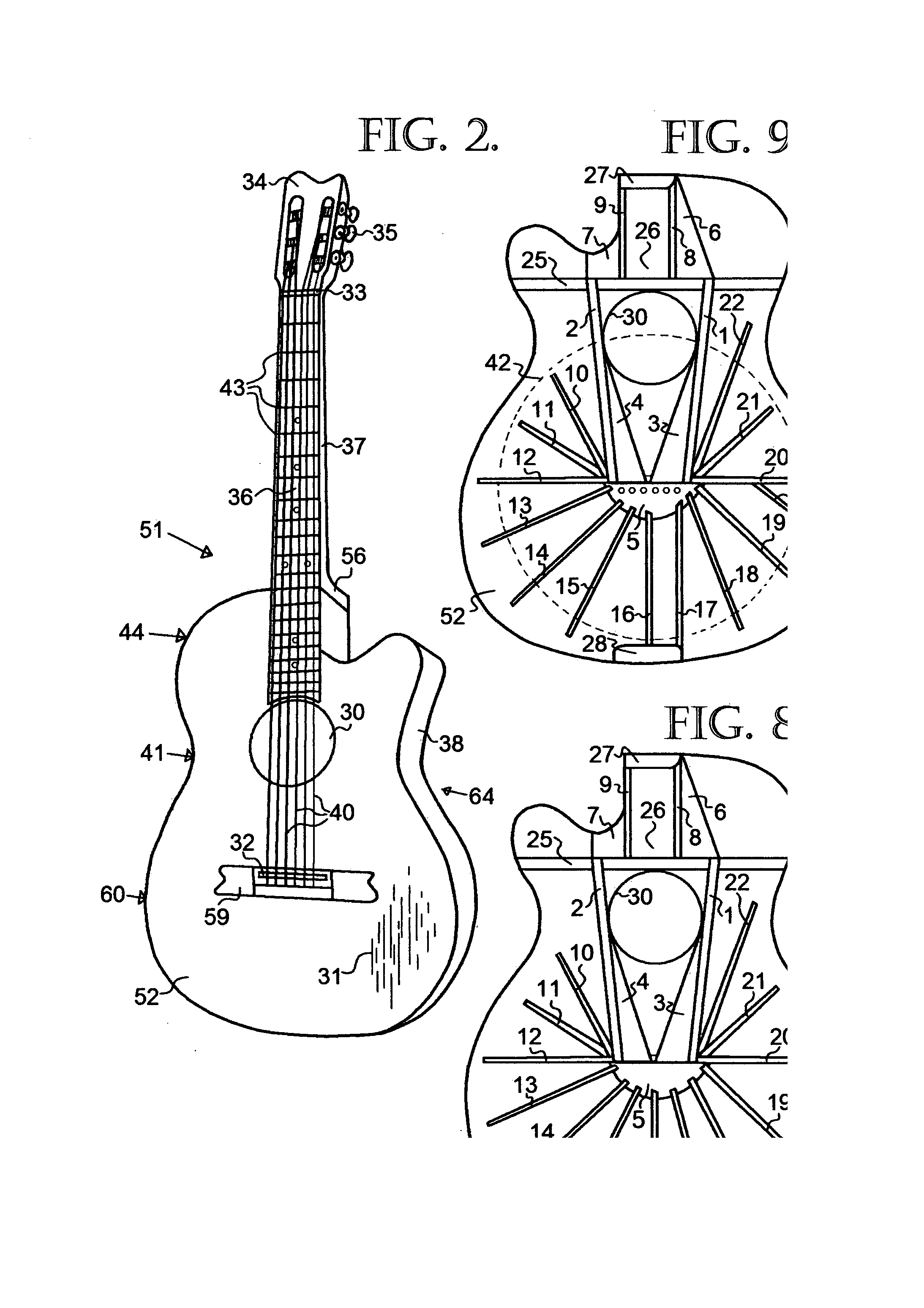Soundboard bracing structure system for musical stringed instruments
a soundboard bracing and stringed instrument technology, applied in the field of acoustic musical stringed instruments, can solve the problems of soundboards that are not self-supporting, soundboards placed under stress, and are not able to vibrate uniformly, so as to reduce the deflection of the soundboard, and reduce the effect of soundboard stress
- Summary
- Abstract
- Description
- Claims
- Application Information
AI Technical Summary
Benefits of technology
Problems solved by technology
Method used
Image
Examples
Embodiment Construction
[0068]While the novel objects, features and advantages, of the inventions well-balanced bracing system structure may be applied to the soundboards of more than one type of an acoustic musical stringed instrument, in order to illustrate and clarify the workings thereof, two examples of an acoustic guitar is used herein.
[0069]Where references to drawings will be made to clarify the method of operations for the embodiments of the guitar examples; but it is to be expressly understood, that the drawings are for the purpose of illustration and description only and are not intended to express the limits of the invention.
[0070]Referring now to FIG. 1, a perspective view of the first guitar examples 50 is of a large body 49 steel stringed acoustic guitar constructed from timber in which the bracing structure system of the invention may be applied to, is shown. The guitar has a hollow body 49 with a waist 41 between curved upper bout 44 and curved bottom bout 60 giving shape to the soundboard...
PUM
 Login to View More
Login to View More Abstract
Description
Claims
Application Information
 Login to View More
Login to View More - R&D
- Intellectual Property
- Life Sciences
- Materials
- Tech Scout
- Unparalleled Data Quality
- Higher Quality Content
- 60% Fewer Hallucinations
Browse by: Latest US Patents, China's latest patents, Technical Efficacy Thesaurus, Application Domain, Technology Topic, Popular Technical Reports.
© 2025 PatSnap. All rights reserved.Legal|Privacy policy|Modern Slavery Act Transparency Statement|Sitemap|About US| Contact US: help@patsnap.com



